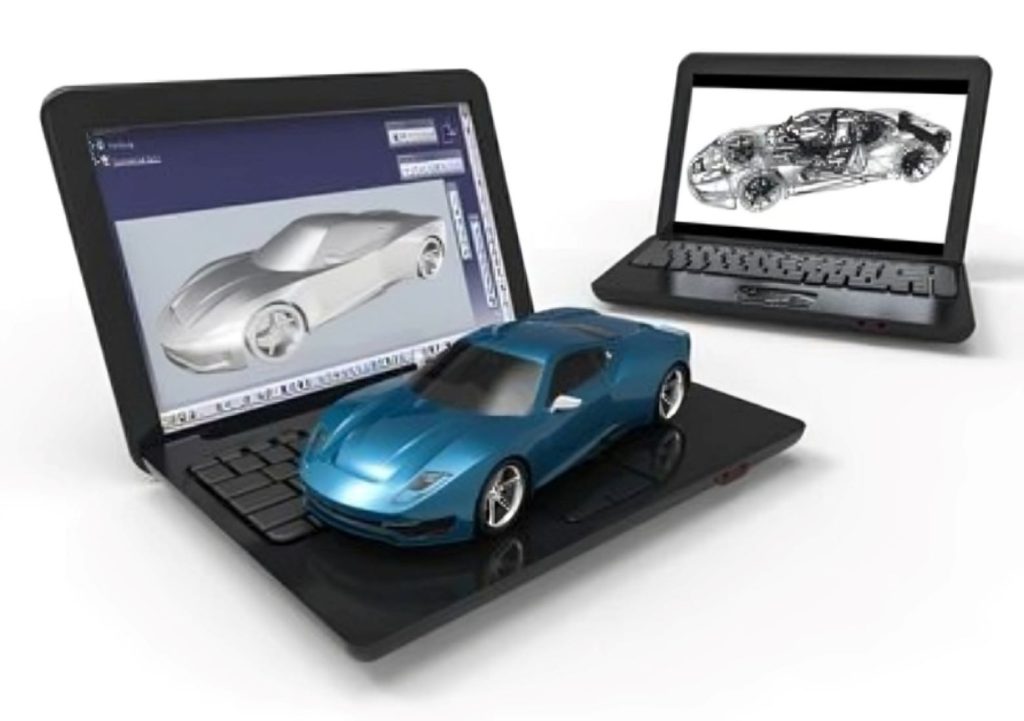Master Computer-Aided Design with Ease

Welcome to the world of Computer-Aided Design (CAD), where imagination and technology merge to create stunning designs. CAD has become an indispensable tool for designers and engineers, revolutionizing the way we bring ideas to life. Whether you are a beginner or an experienced professional, mastering CAD software and modeling techniques will unlock a world of possibilities for you.
In this article, we will provide you with expert tips and guidance to help you navigate the realm of CAD with ease. From understanding the fundamentals of CAD software to mastering 3D CAD modeling, we’ve got you covered. By the end of this article, you’ll be equipped with the knowledge and skills to create intricate designs, visualize concepts, and enhance your overall design capabilities.
Free CAD Practice Test Online
Key Takeaways:
- Computer-Aided Design (CAD) is a powerful tool for designers and engineers.
- Mastering CAD software and modeling techniques is essential for enhancing design capabilities.
- Understanding the fundamentals of CAD software and tools is the first step towards becoming proficient in CAD.
- 3D CAD modeling allows for the creation of accurate and visually stunning designs.
- CAD drafting complements the 3D modeling process and enhances design precision.
Understanding CAD Software and Tools
In the world of computer-aided design (CAD), the right software and tools can make all the difference in creating precise and detailed designs. In this section, we will explore the various CAD software available in the market and discuss the essential tools and technologies that every designer and engineer should be familiar with.
The Importance of CAD Software
CAD software is a powerful tool that enables designers to create and modify digital designs with precision and efficiency. It allows users to generate 2D and 3D models, perform simulations, and visualize concepts before they are brought to life. With the advancement of CAD technology, designers can now work faster, collaborate seamlessly, and produce high-quality designs.
Some popular CAD software in the industry include:
| Software | Description |
|---|---|
| AutoCAD | Developed by Autodesk, AutoCAD is one of the most widely used CAD software. It offers comprehensive tools for both 2D and 3D design, allowing users to create precise and detailed drawings. |
| SolidWorks | SolidWorks is renowned for its powerful 3D modeling capabilities. It provides a user-friendly interface and advanced features for creating complex designs and assemblies. |
| Fusion 360 | Fusion 360, also created by Autodesk, is a cloud-based CAD software that integrates design, engineering, and manufacturing functionalities. It offers collaboration tools and is suitable for both professionals and hobbyists. |
These software options are just a glimpse of what the market has to offer. Each software has its own strengths and specialties, so it’s essential to choose the one that best suits your needs and preferences.
Essential CAD Tools and Technologies
In addition to software, there are specific tools and technologies that are commonly used in CAD to enhance productivity and streamline design workflows. Some of these tools include:
- Parametric Modeling: This powerful feature allows designers to create models with parameters, making it easier to modify and update designs as needed.
- 3D Rendering: With realistic 3D rendering capabilities, designers can visualize their designs in detail, providing a lifelike representation of the final product.
- Simulation: Simulation tools help designers analyze the behavior and performance of their designs under different conditions, ensuring optimal functionality and efficiency.
- Collaboration and Version Control: CAD software often includes features that facilitate collaboration among team members, allowing seamless sharing of designs and tracking of changes made during the design process.
By harnessing these tools and technologies, designers can improve their workflow efficiency, reduce errors, and create designs that meet the highest standards of quality and precision.
Mastering 3D CAD Modeling
In this section, we will dive deep into the world of 3D CAD modeling, equipping you with the skills and knowledge to create exceptional designs. From advanced techniques to best practices, we will explore how to harness the full potential of 3D CAD to bring your ideas to life.
Advanced Techniques for Stunning Designs
Creating accurate and visually stunning designs is the hallmark of a skilled 3D CAD modeler. To achieve this, it’s essential to master advanced techniques that allow for precise modeling and intricate detailing.
- Parametric Modeling: Learn how to create parametric models, which offer flexibility and adaptability to changes in the design. By defining parameters and relationships between components, you can easily modify your design while maintaining accuracy.
- Assembly Modeling: Discover how to assemble complex products or structures using 3D CAD software. This technique involves creating individual components and then assembling them to form a complete model, providing a comprehensive view of the final product.
- Surface Modeling: Master the art of surface modeling, which is crucial for creating smooth and organic shapes. Surface modeling enables the creation of intricate curves and contours, resulting in visually appealing designs.
Best Practices for Accurate Designs
CAD modeling requires attention to detail and adherence to best practices to ensure accuracy in your designs. By following these guidelines, you can produce high-quality models that meet industry standards:
- Organize your files: Maintain a systematic file structure to keep track of various components and iterations of your designs. Organizing your files helps you find and modify specific sections quickly.
- Use constraints and dimensions: Apply constraints and dimensions to ensure precise measurements and maintain the integrity of your design. This practice also enables efficient design modifications.
- Regularly check for errors: Conduct regular checks for errors, such as overlapping surfaces or missing connections. By fixing these issues early on, you can avoid costly mistakes and rework.

The Role of CAD Drafting
CAD drafting is an integral part of the 3D modeling process, serving as the foundation for creating accurate designs. It involves creating two-dimensional drawings that depict the various elements of a three-dimensional model. CAD drafting provides the necessary technical details and dimensions required for precise manufacturing and construction.
In summary, mastering 3D CAD modeling opens up a world of possibilities for designing exceptional products and structures. By mastering advanced techniques, following best practices, and understanding the role of CAD drafting, you can elevate your skills and create visually stunning and accurate designs.
Conclusion
In conclusion, Computer-Aided Design (CAD) has revolutionized the design industry, offering designers and engineers powerful tools to bring their ideas to life. CAD software provides a range of features and functionalities that streamline the design process, making it more efficient and precise.
By following the expert tips and guidance provided in this article, you can unlock the full potential of CAD and enhance your design capabilities. Whether you are a beginner starting your journey in the world of design or an experienced professional looking to broaden your skillset, mastering CAD software and modeling techniques is essential.
With CAD, you have the ability to create intricate 3D models, generate accurate technical drawings, and even simulate real-world environments. This level of precision and realism allows for better decision-making, reduces errors, and increases productivity.
As technology in the design industry continues to evolve, staying updated with the latest CAD software and tools will undoubtedly boost your career prospects. Embrace the power of Computer-Aided Design and take your designs to new heights!
FAQ
What is Computer-Aided Design (CAD)?
Computer-Aided Design (CAD) is a technology that utilizes specialized software to create, modify, and analyze digital models and designs. It allows designers, engineers, and architects to efficiently draft and develop precise 2D and 3D models, enabling better visualization and communication of design ideas.
What are CAD software and tools?
CAD software refers to the computer programs and applications specifically designed for computer-aided design. These software tools provide a range of features and functionalities that help designers create and manipulate digital models, annotate drawings, simulate real-world conditions, and generate technical documentation.
How does CAD technology enhance the design process?
CAD technology streamlines the design process by offering advanced tools and functionalities that improve efficiency and accuracy. It enables designers to quickly iterate and modify designs, perform complex simulations and analysis, collaborate with team members, and generate detailed documentation for production and manufacturing.
What are the benefits of using 3D CAD modeling?
3D CAD modeling allows designers to create realistic and immersive digital representations of objects, products, and spaces. It helps them visualize designs from multiple angles, evaluate design integrity, identify potential issues, simulate performance, and generate accurate prototypes. 3D CAD modeling enhances communication and helps stakeholders better understand the final product or design concept.
How does CAD drafting complement 3D modeling?
CAD drafting involves creating accurate and detailed technical drawings based on the 3D models. It focuses on precise measurements, annotations, and specifications required for manufacturing or construction. CAD drafting ensures that the design intent is properly communicated to manufacturers, contractors, and other stakeholders, allowing them to accurately produce the desired end product.
